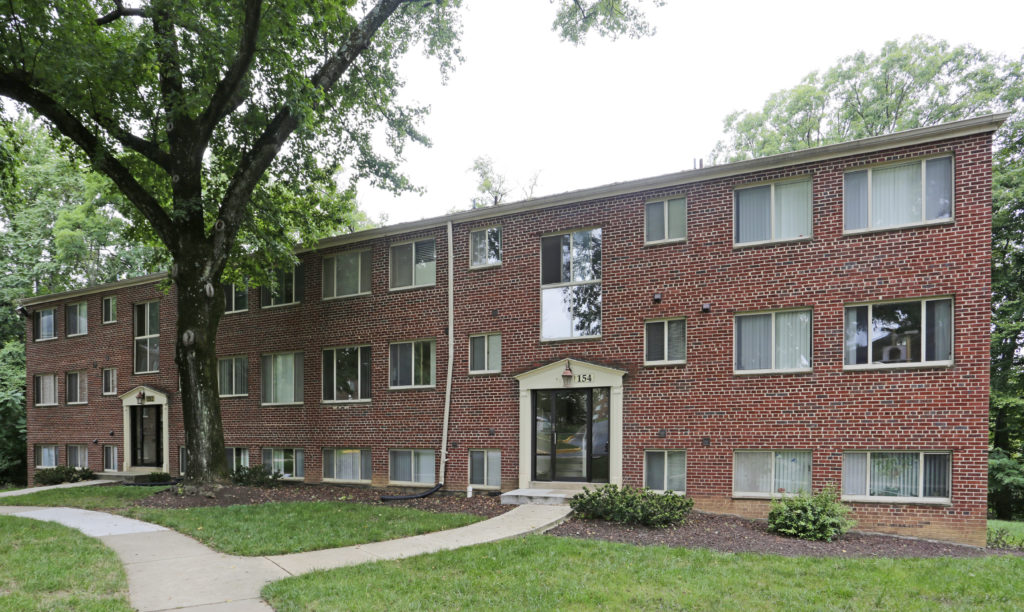
Historical Utility Data & Costs: The 5-year average water consumption was 64,679,000 gallons per year. Extrapolating this data and applying the water utility rates ($7.00 per thousand gallons), the annual cost of water would have been $452,753, or $517 per unit.
The average annual gas consumption for powering the community’s central boiler was 281,290 therms. Applying actual natural gas prices, gas expenses would have been $506,340, or $578 per unit.
The Solution: The failing piping system was constructed with galvanized and copper piping, and extensive corrosion had virtually destroyed the integrity of the pipes. Since the potable hot water was supplied by a central boiler, SageWater reviewed the owner’s water and water heating expenses and concluded that a “boiler conversion” was in order:
Rather than installing new piping in the same configuration as the existing system, the new system would be configured such that each dwelling would be served by its own water heater. Water consumption by each unit would be measured with submeters, allowing the owner to make residents accountable for their personal usage. The central boiler would be abandoned.
The Project: The community contained 72 buildings, and as SageWater completed a building each week, the owner’s staff would then begin the administrative process that would hold residents accountable for their personal water consumption. The project was completed ahead of schedule, taking taking only 72 weeks from start to finish.
Water Conservation: After the boiler conversion, water consumption dropped by over 15 million gallons, a 24% decrease from the 49 million gallons used in the year prior.
The reduced water consumption resulted in lower per-gallon charges by the municipality; therefore, the applicable rate was $6.58 per thousand gallons, resulting in an additional 6% savings. Actual gross water expense was $324,189, a 28% total savings.
Gas Conservation: After the conversion, gas consumption dropped to 523 therms, an almost 100% reduction. The average cost per therm was approximately $1.80; equating to a savings of $505,380 per year. The concept is simple— by powering the water heaters with the individual residents’ electric panels, the cost of heating the potable water is transferred to the residents’ individual electric bills.
Resident Accountability: The owner’s net water expense after conversion was $42,030, a savings of $410,723, or 90%. As stated above, the cost of heating the water was transferred to each resident’s electric bill, which made each resident 100% accountable for personal water heating expenses.
Gross Financial Results: Although the resident accountability program was not fully implemented in the first year, the owner’s water and gas utility expense was reduced by $916,103 per year as a result of the boiler conversion program ($1,045 per apartment). Notably, this improvement to the owner’s operating expense does not take into account some of the most significant cost savings and other bottom-line profit improvements, such as:
- Elimination of leak damage expenses (leak damage repair, resident concessions, etc.);
- Lower resident turnover rates, which increased occupancy rates (higher revenue) and lowered the cost of recruiting new residents (lower expenses);
- Improved levels of resident satisfaction, facilitating the owner’s ability to increase rents.
Net Financial Results: If the owner had selected a conventional solution to the pipe decay problem and had simply replaced the pipes without reconfiguring for individual water heaters, residents would continue to waste water and the owner would continue to pay to heat unlimited hot water. The cost of such a conventional solution would have provided little to no return on investment.
But due to the leaks, the owner had to take action—the system had to be replaced regardless. Boiler conversion costs approximately $1,500 more than conventional piping replacement per unit. Therefore, the incremental investment of about $1,500 per unit yielded a return of $1,045 per unit in the first year—an immediate 70% offset of the conversion costs.
Increased Property Value: Ultimately, the additional annual cash flow generated by the boiler conversion was $916,103 per year, or $1,045 per unit. At a capitalization rate of 7%, the value of this 876-unit community was increased by $13,087,000, or $14,939 per unit.
In conclusion, by selecting a boiler conversion rather than a like-for-like system replacement, the owner not only recouped the cost of the project through utility expense savings, but also saw a significant increase in their overall property value once the project was completed.

